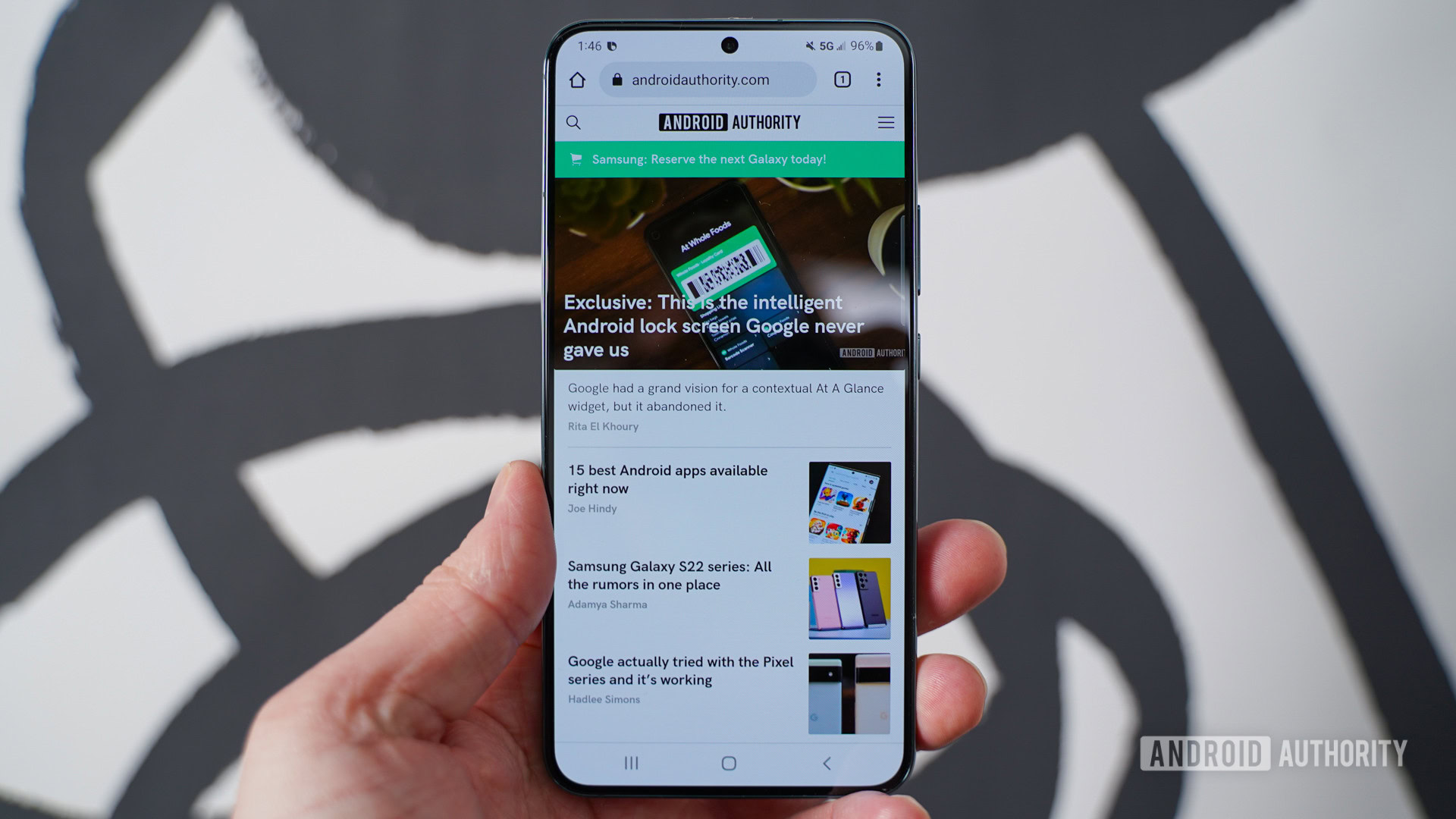Affiliate links on Android Authority may earn us a commission. Learn more.
Here's why Samsung made a U-turn on Galaxy S22, S22 Plus display specs

- Samsung has revealed why the Galaxy S22 and S22 Plus screen specs were changed.
- The company says the phones’ display hardware drops as low as 48Hz.
- However, it clarified that the data transfer rate from the processor to the screen can be dropped to 10Hz.
Samsung initially claimed that the Galaxy S22 and S22 Plus have 120Hz screens that are able to drop as low as 10Hz. However, the company recently updated its spec sheets to say that the displays actually only drop down to 48Hz. So what’s the deal, then?
Well, Samsung has issued a comment to Phone Arena to “clarify any confusion” around the minimum refresh rate:
We would like to clarify any confusion relating to the display refresh rate for Galaxy S22 and S22 Plus. While the display component of both devices support between 48 to 120Hz, Samsung’s proprietary technology offers adjustable display refresh rates, where data transfer rates from AP [application processor – ed] to display can be minimized to as low as 10Hz in order to save power consumption.
The Korean manufacturer added that it changed the minimum refresh rate in its promotional material to 48Hz to be in line with the “more widely-recognized industry standard.”
So what does Samsung’s explanation mean?
Samsung is saying that its display hardware supports a minimum refresh rate of 48Hz. However, the act of reducing the data transfer rate between the processor and display to 10Hz means that there is an efficiency gain in theory as the processor doesn’t need to deliver as much display data.
In saying so, the screen is still refreshing at 48Hz even if the data transfer rate is 10Hz. In other words, the screen is still checking for new display data and displaying this data 48 times a second even if the display data is only changing 10 times a second.
Why is this important?
Many of today’s high refresh rate phones are able to dynamically lower the refresh rate in order to save battery life. For example, you might want that 120Hz refresh rate when playing a game or scrolling, but you don’t need it when reading an ebook or viewing a photo.
Many phones typically only switch between the highest refresh rate and the industry-standard 60Hz, but some phones are able to drop down to as low as 10Hz or 1Hz, saving a ton of juice in the process. Lower is better for battery life in this regard, and there was clearly a big difference between 10Hz as Samsung originally claimed and 48Hz as they’re now claiming.
It’s worth reiterating that Samsung’s solution should result in efficiency gains due to the processor not having to work as hard. However, the display will still be refreshing at 48Hz, which isn’t ideal when you remember that the biggest battery hog on any smartphone is the screen. So a screen that actually drops down to 10Hz would’ve been a much bigger gain in theory.